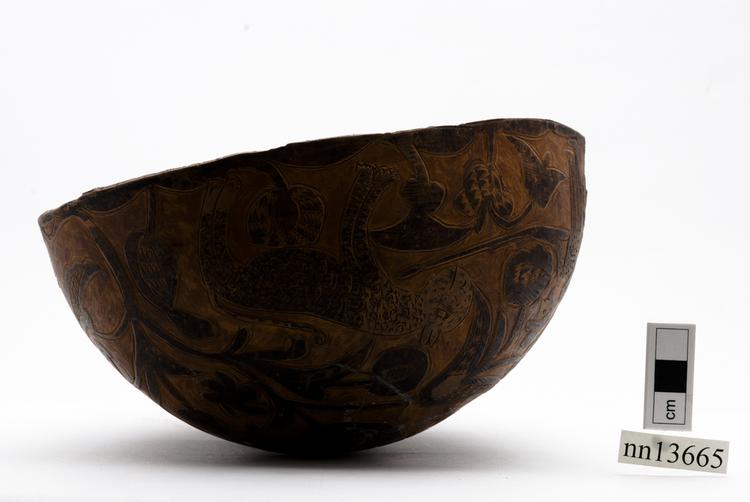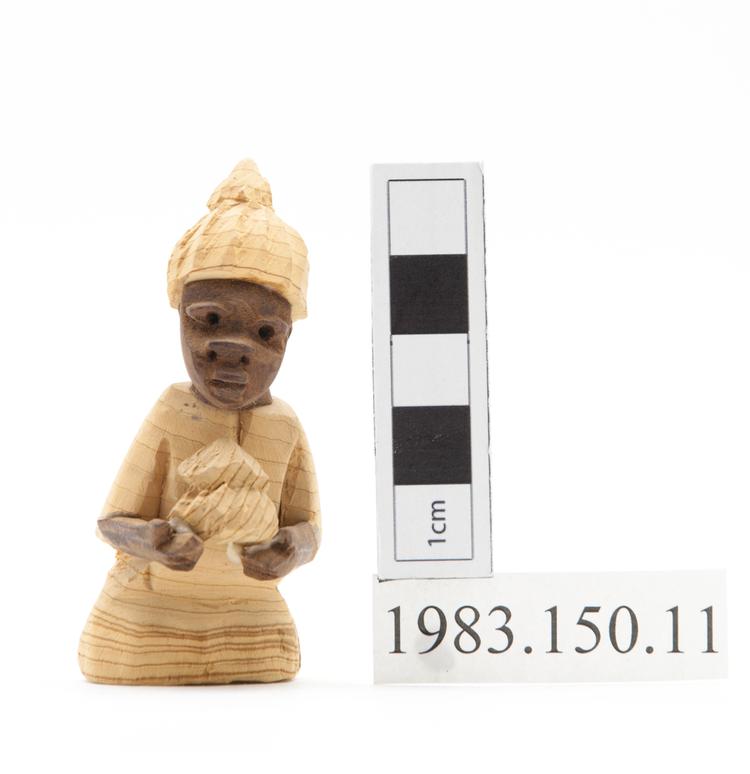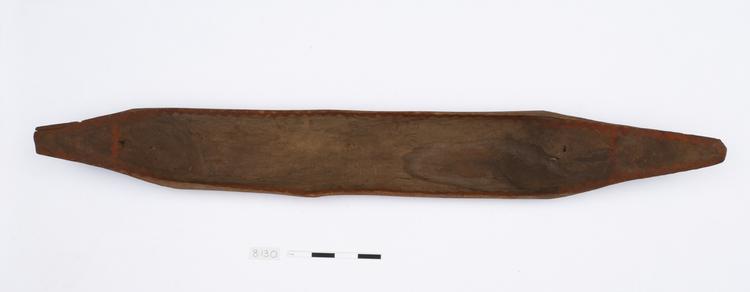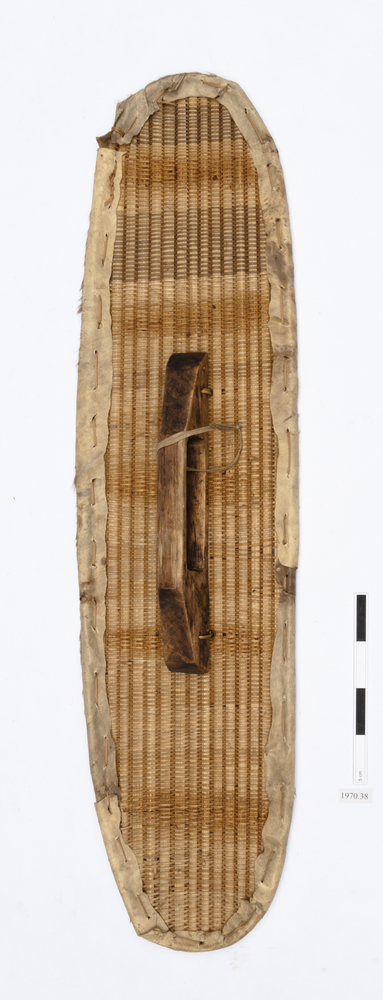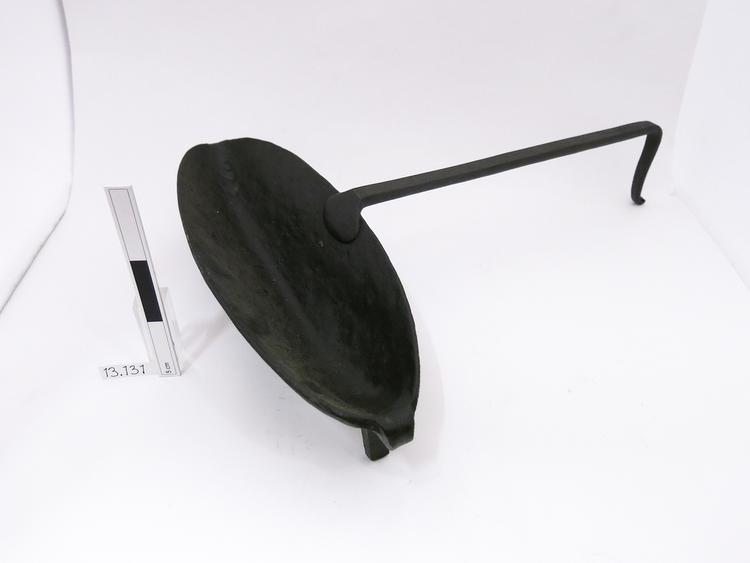
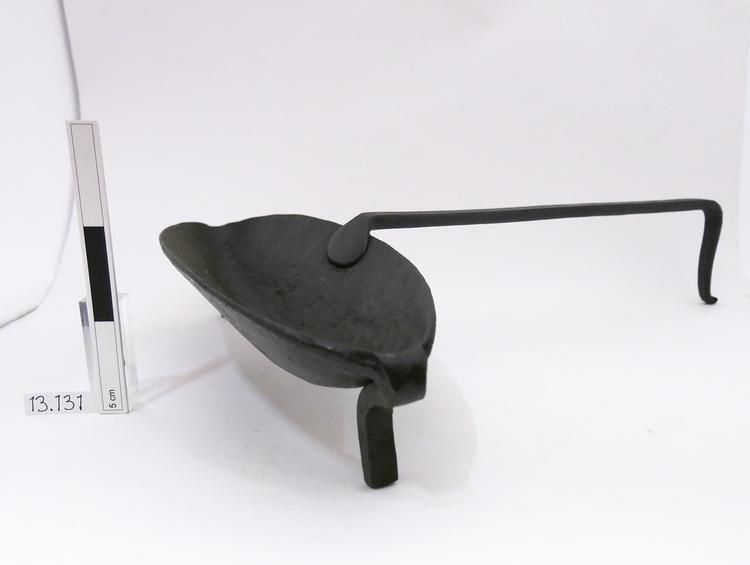
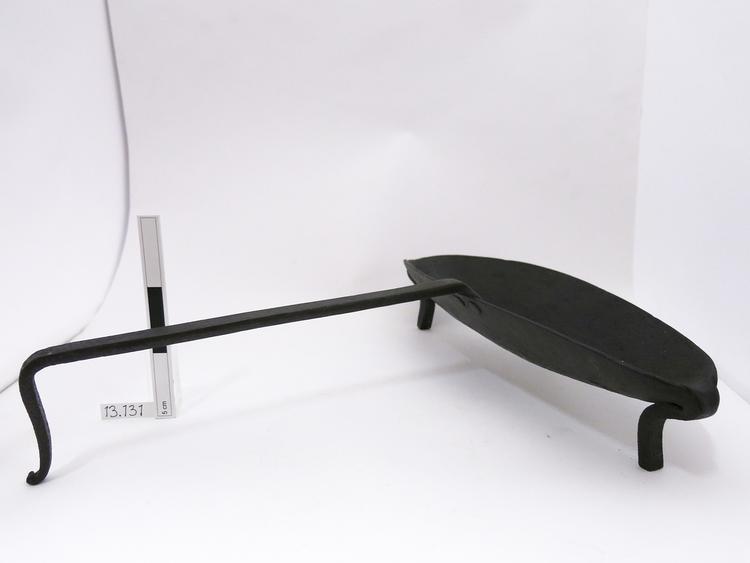
Boat-shaped grisset or rush light with long handle.
Rushlights were widely used in parts of Wales until the 20th century. Rushes were gathered in summer or autumn and peeled so that only a narrow strip of the peel to support the pith remained. The rushes were then drawn (in a grisset) through scalding grease until saturated and ready for use when cool. The rushes were then dried and dipped in kitchen fat or tallow melted over an open fire in a grissett. When the pith was completely soaked the rushlights were left to dry, and were then stored in bundles for later use. Because rushlights were not strong enough to stand upright on their own, and because they did not burn well vertically, they were burned in specially-made holders with jaws which held them at roughly 45 degrees. On average a rushlight would burn for about 15-20 minutes, but the light they gave was poor and they had to be "moved up" in the jaws of the rushlight holder every few minutes. However, they were very cheap to make, especially in farming communities where livestock ensured an ample supply of animal fat or tallow for lighting purposes.



